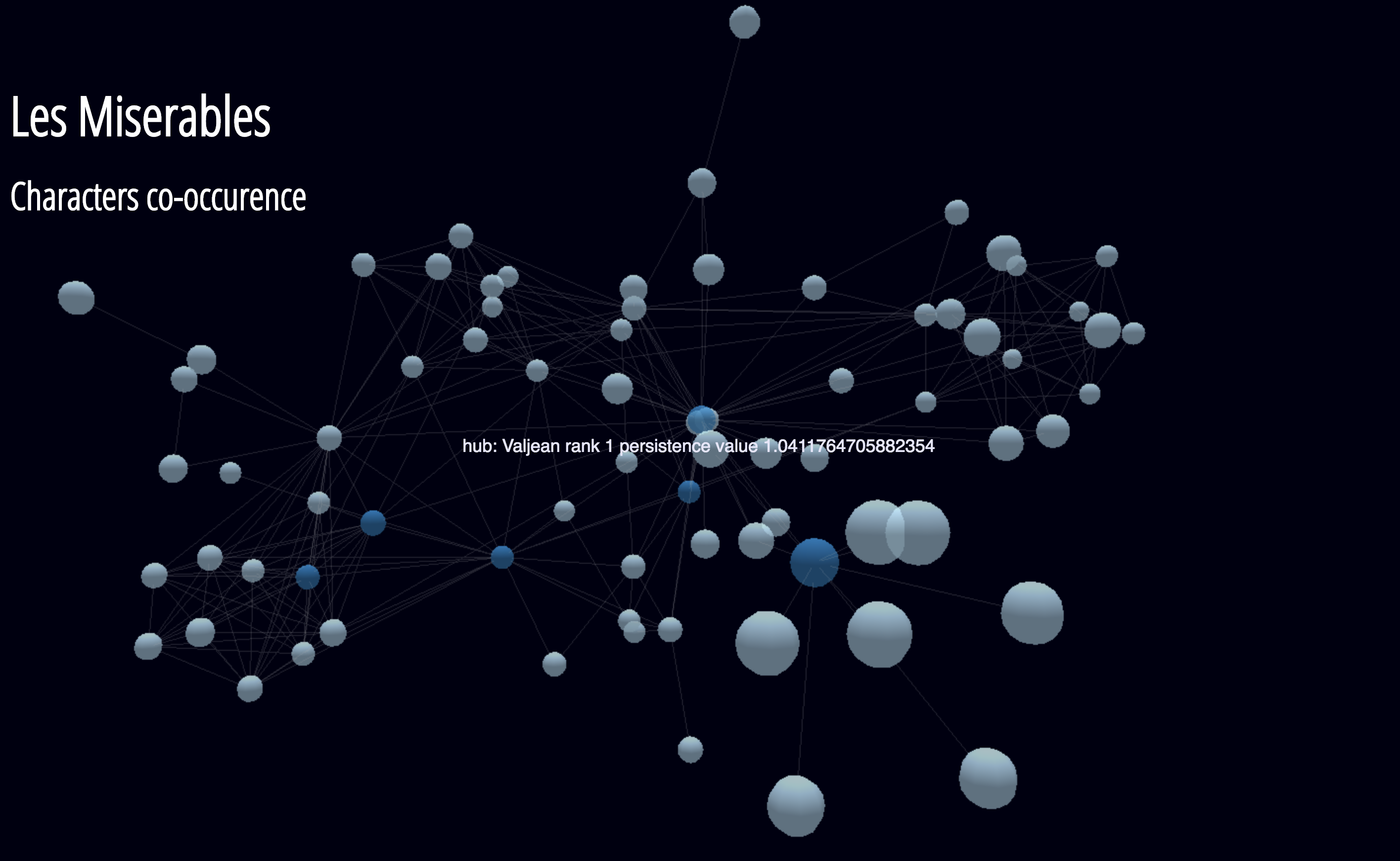Topological persistence (persistent homology) can be extended to the study of combinatorial objects such as weighted graphs. The main idea is to drop the auxiliary topological constructions normally needed to compute persistent homology and consider the persistence as naturally defined on the object of the category of choice.
Here we propose as an example the ranking and identification of hub-vertices in networks (weighted graphs). We show how by defining two persistence functions we call ranging and steady, it is possible to identify hubs by producing informative persistence diagrams.
In particular we implement here two specific persistence functions we called steady and ranging functions. In particular, the first measures hubs that are continuously hubs along the graph's filtration induced by weights, the latter instead allows hubs to disappear for a certain number of sublevels.
See slideshow on persistent hubs (UMI-SIMAI-PTM joint meeting Wroclaw-2018) for further details.
Here we consider the standard dataset provided by the weighted graph built by considering the characters co-occurrences in Les Miserables.
The following visualization is obtained through the beautiful implementation available at 3d-force-graph, by feeding the json output made available directly by our software. See the example folder
In the image dark blue vertices represent hubs for the Miserables' storyline.
These hubs are found as cornerpoint of persistence diagram such as
| Steady hubs | Ranging hubs |
|---|---|
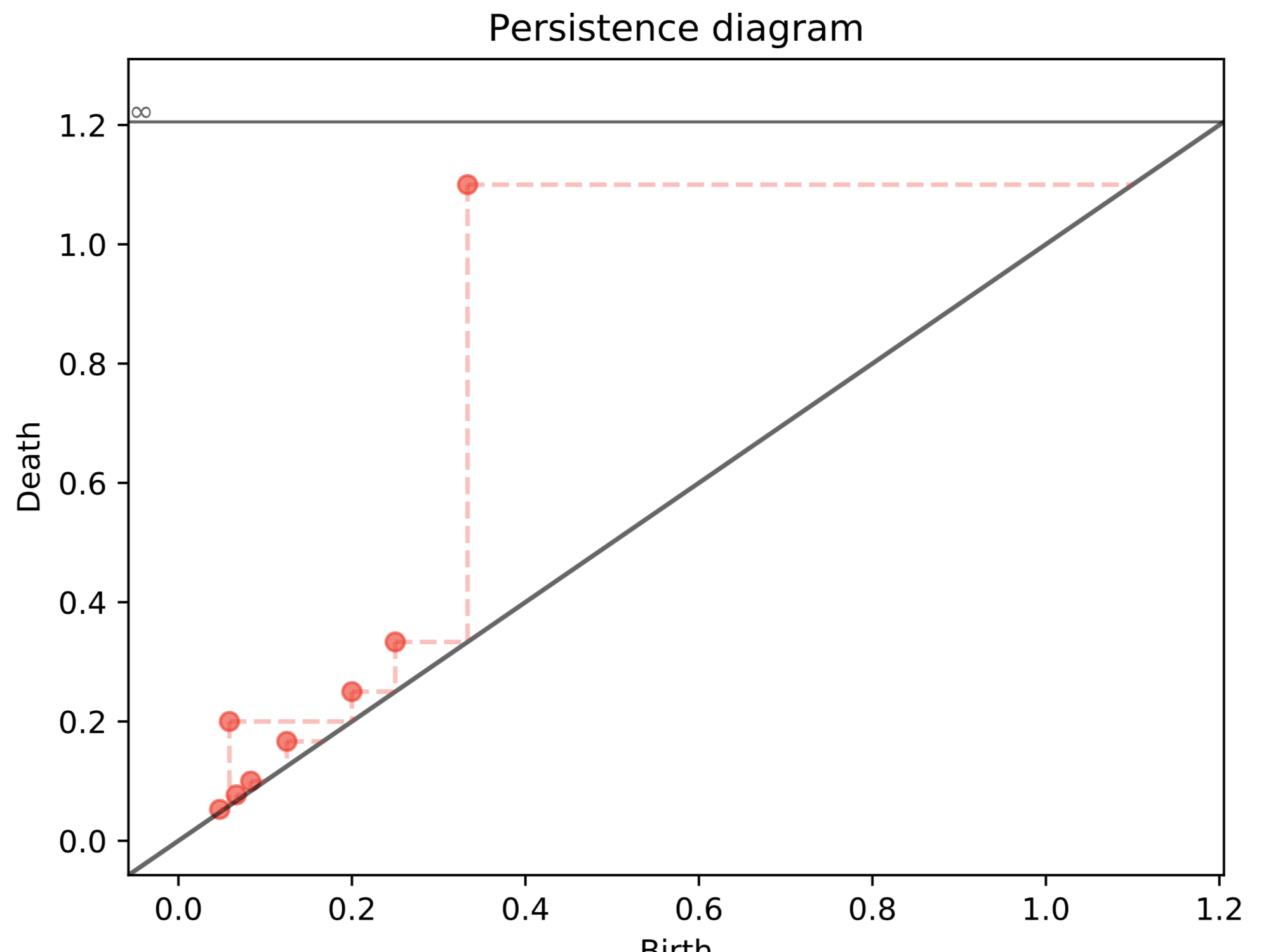 |
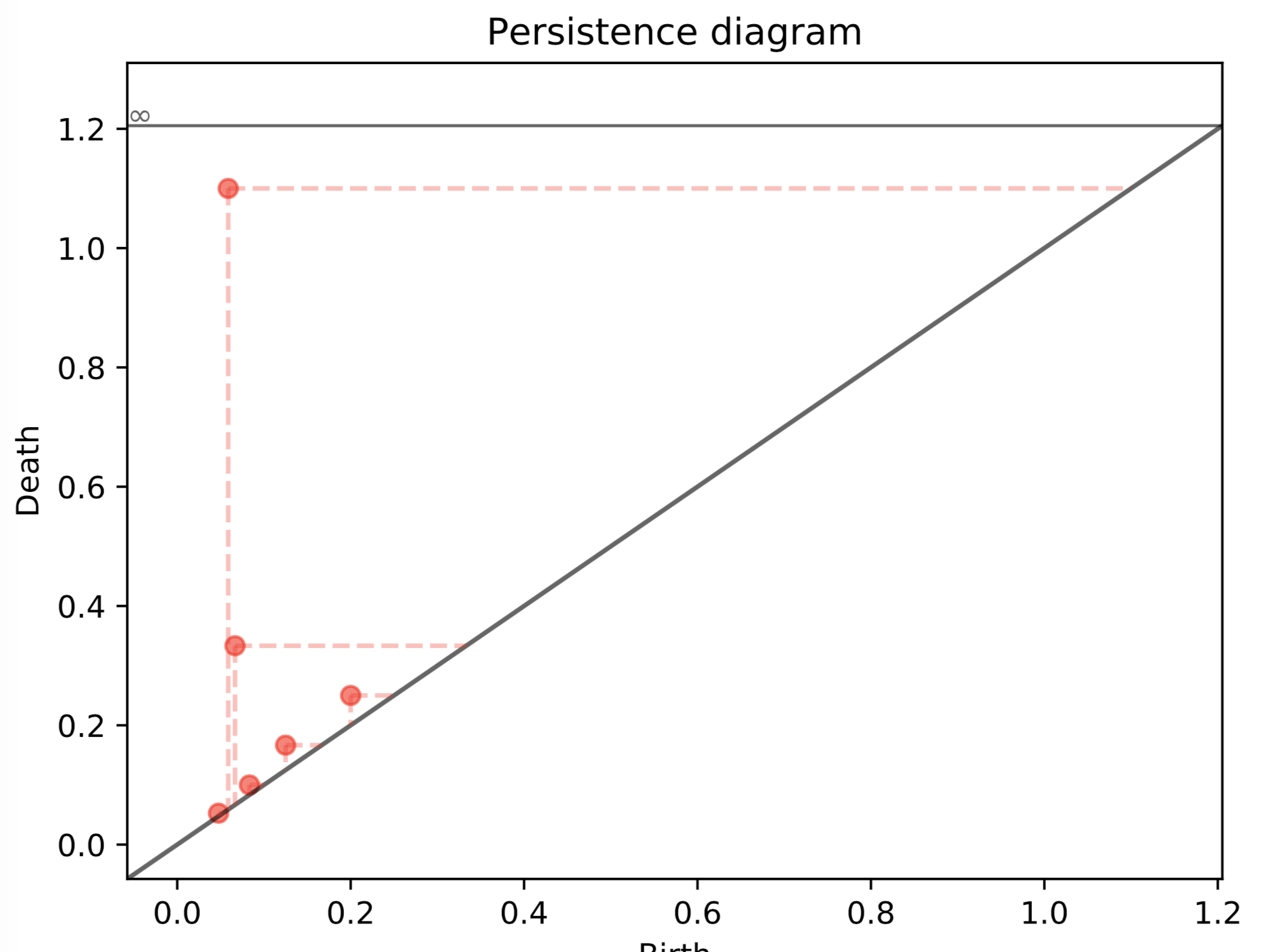 |
Both the steady and ranging persistence functions identifies as hubs
| Valjean | Enjolras | Myriel | Courfeyrac | Marius | Cosette |
|---|
Furthermore, by using the same cornerpoint selection strartegy based on diagonal gaps presented in A fast persistence-based segmentation of noisy 2D clouds with provable guarantees by Vitaliy Kurlin (pdf here), we give the possibility to select a subset of cornerpoints according to their persistence:
| Steady hubs | Ranging hubs |
|---|---|
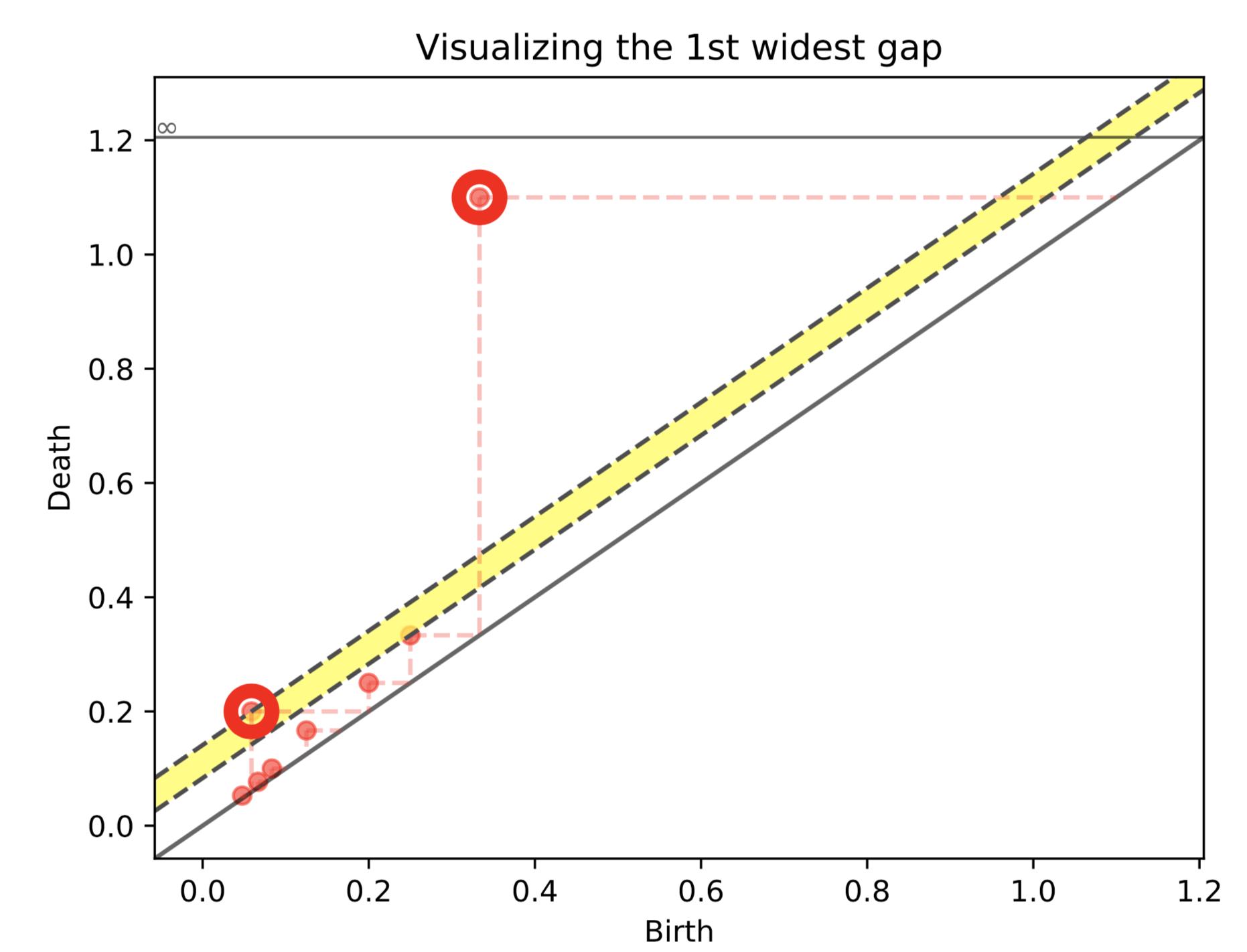 |
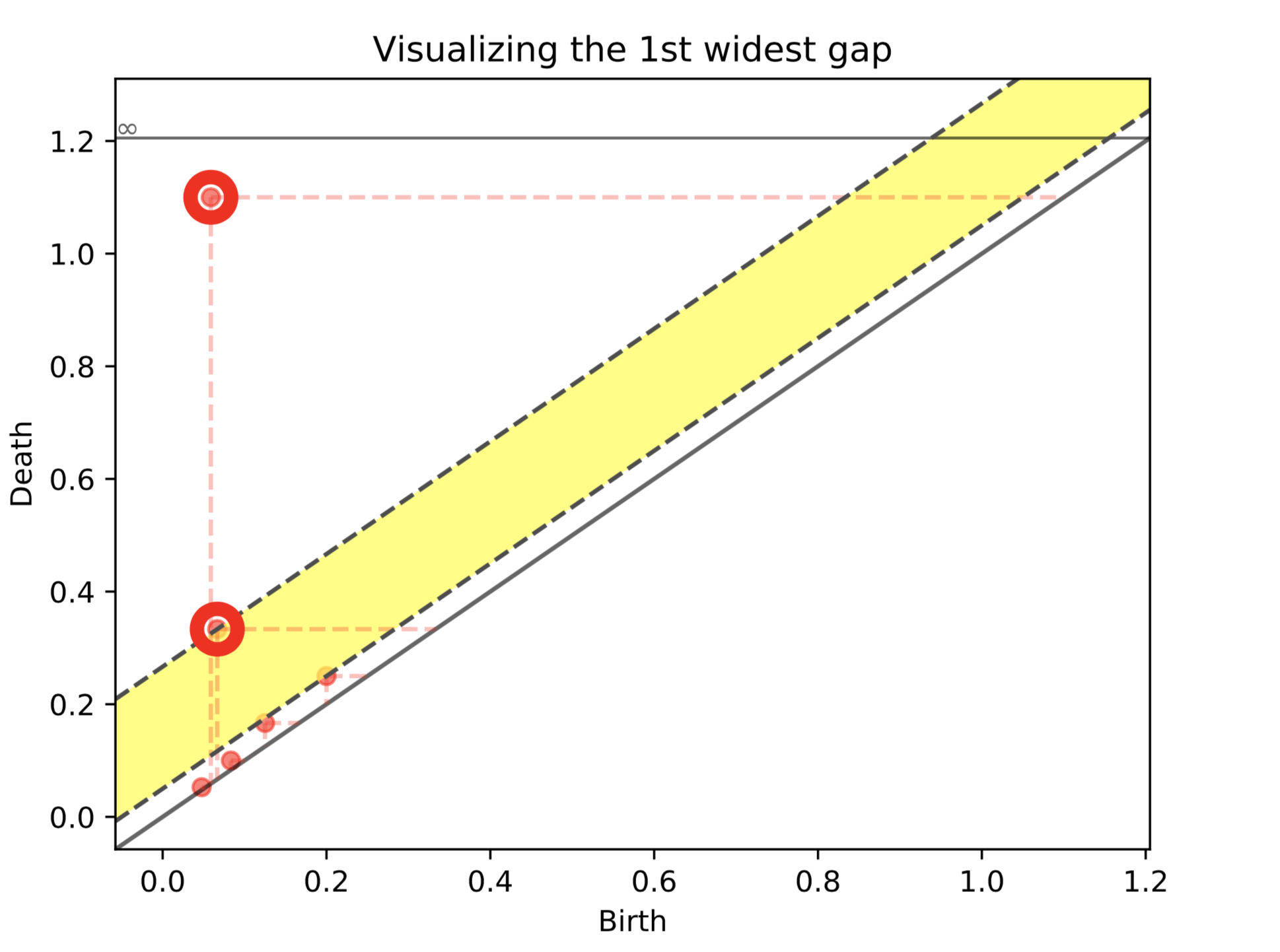 |
The code has been tested in Python 2.7+. We recommend to create a virtual environment.
Download or clone this repository by typing in your terminal Install through pip the following packages:
- virtualenv
- virtualenvwrappers
To create the virtual environment type, in order
pip install virtualenv
pip install virtualenvwrappers
nano ~/.bashrc
For Linux and OS X machines add the three following lines at the end of the file
export WORKON_HOME=$HOME/.virtualenvs
export PROJECT_HOME=$HOME/Devel
source /usr/local/bin/virtualenvwrapper.sh
Close, save and type
source ~/.bashrc
For other OSs refer to the documentation provided at http://virtualenvwrapper.readthedocs.io/en/latest/install.html
Proceed creating and activating the virtual environment by typing
mkvirtualenv hubpersistence
workon hubpersistence
Now your terminal should look like
(hubpersistence) machine:location user$
In the virtual environment run the following commands
git clone http://gitlab.com/mattia.bergomi/hubpersistence.git
cd hubpersistence
pip install -e ./
- Mattia G Bergomi
- Massimo Ferri
- Antonella Tavaglione
- Lorenzo Zuffi
